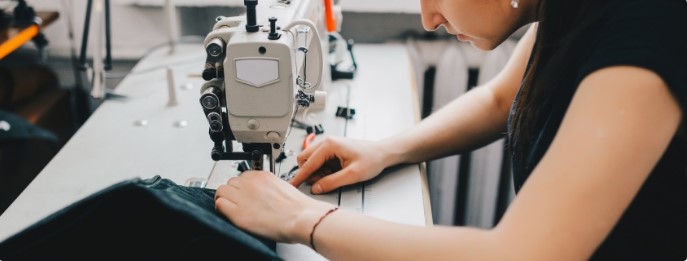
Introduction
In today’s fast-paced, tech-driven society, one thing is crystal clear—digitizing is no longer a luxury, it’s a necessity. Whether it’s turning hand-drawn sketches into sleek digital graphics or converting logos into stitch-ready embroidery files, digitizing bridges the gap between the traditional and the cutting-edge. And the best part? Anyone can harness this power, from artists and small businesses to major corporations.
What Is Digitizing, Really?
At its core, digitizing is the process of converting analog content like a paper drawing, printed photo, or even a painted mural into a digital format. This process has a broad range of applications, but in the world of embroidery, digitizing refers specifically to transforming artwork into a digital embroidery file that machines can read.
Embroidery machines aren’t magic; they rely on precise instructions. A digitized design acts like a blueprint, telling the machine exactly where to place each stitch, what direction to follow, how to layer the thread, and even when to change colors.
Why Digitizing Matters
So, what’s the big deal? Why is digitizing such a game-changer?
Because it unlocks endless possibilities. With the right digitized file, you can:
-
Recreate your logo on hats, shirts, bags, and more.
-
Convert a family photo into a heartfelt embroidered keepsake.
-
Design custom patches for sports teams, clubs, or businesses.
-
Create uniformity in branding across all kinds of apparel.
It empowers creators and businesses alike to take full control over their designs.
Digitizing in Embroidery: The Magic Behind the Thread
Let’s zero in on digitizing for embroidery. This specialized form of digitizing involves converting images (like a JPG, PNG, or SVG file) into machine-readable embroidery formats (such as DST, PES, EXP, or JEF).
But don’t be fooled it’s not just a simple click-and-convert job. Professional digitizing requires a sharp eye for detail, understanding of stitch types, densities, push/pull compensation, underlay strategies, and fabric types.
The Journey: From Sketch to Stitch
Here’s how the typical digitizing process flows:
Step 1: Design Assessment
The first step is reviewing the image to determine how it will translate to embroidery. Not all designs are embroidery-friendly right out of the gate. Complex gradients, tiny text, and ultra-fine details often need to be simplified or adjusted.
Step 2: Software Magic
Using digitizing software like Wilcom, Hatch, or Pulse, a digitizer manually maps out the design. They decide where each stitch goes, what type of stitch to use (satin, fill, run), and how the design should be structured for the smoothest embroidery.
Step 3: Test Stitching
Once the design is digitized, it’s time to test it on fabric. This trial run helps identify any tweaks that need to be made like adjusting density to avoid puckering or tweaking the underlay for better stability.
Step 4: Final File Creation
After testing and refining, the final file is saved in the appropriate format (DST, PES, etc.) and is now ready for use on embroidery machines.
Common Embroidery File Types
Each embroidery machine brand has its own preferred file formats. Here’s a quick breakdown:
-
DST (Tajima): One of the most widely accepted file formats.
-
PES (Brother/Babylock): Common in home embroidery machines.
-
EXP (Melco/Barudan): Efficient for commercial embroidery use.
-
JEF (Janome): Popular among hobbyists.
-
PXF (Pulse): Used mainly by professionals with advanced software.
Knowing what format your machine requires is key to a smooth workflow.
Why You Should Choose Professional Digitizing Services
Sure, there are auto-conversion tools out there, but nothing beats the precision and quality of expert digitizing. Here’s why professional services like Absolute Digitizing are worth every penny:
-
Accuracy: They know how to optimize every design for flawless stitching.
-
Customization: Want specific thread types or design placement? No problem.
-
Quality Control: Professional digitizers test and tweak designs until they’re perfect.
-
Time-Saving: Skip the learning curve and focus on creating or running your business.
With prices starting as low as $1 per 1000 stitches, it’s an affordable investment in quality.
Who Needs Digitizing Services?
The short answer? Almost everyone.
-
Fashion Brands: Add logo embroidery to your collections.
-
Sports Teams: Get high-quality patches and uniform designs.
-
Small Businesses: Brand your gear for trade shows or company events.
-
Craft Enthusiasts: Turn your artwork into unique gifts or products.
-
Promotional Companies: Deliver premium embroidered items for clients.
If you’re creating embroidered items, digitizing is your secret weapon.
Tips for Better Results When Digitizing
Want to make sure your design comes out perfectly? Keep these quick tips in mind:
-
Start with High-Resolution Artwork: Clearer images mean better digitizing results.
-
Avoid Tiny Details: Small text and intricate lines don’t always translate well.
- Choose the Right Fabric: The type of fabric affects stitch density and underlay.
- Communicate Your Needs: Let your digitizer know your intended use and machine type.
The Future of Digitizing
With AI and automation creeping into every industry, you might wonder if human digitizers will become obsolete. The answer? Not anytime soon. While automation can handle simple conversions, complex and high-quality designs still need the trained eye of a professional.
That said, the future looks exciting. Cloud-based platforms, mobile-friendly apps, and real-time preview features are making digitizing more accessible than ever. But expertise will always be king when it comes to top-tier embroidery.
Conclusion
Digitizing has completely revolutionized the world of embroidery, transforming it from a hand-crafted, time-consuming process into a precise, repeatable art form. Whether you’re a business looking to boost brand recognition or a creator wanting to make your designs wearable, digitizing is the gateway to excellence.